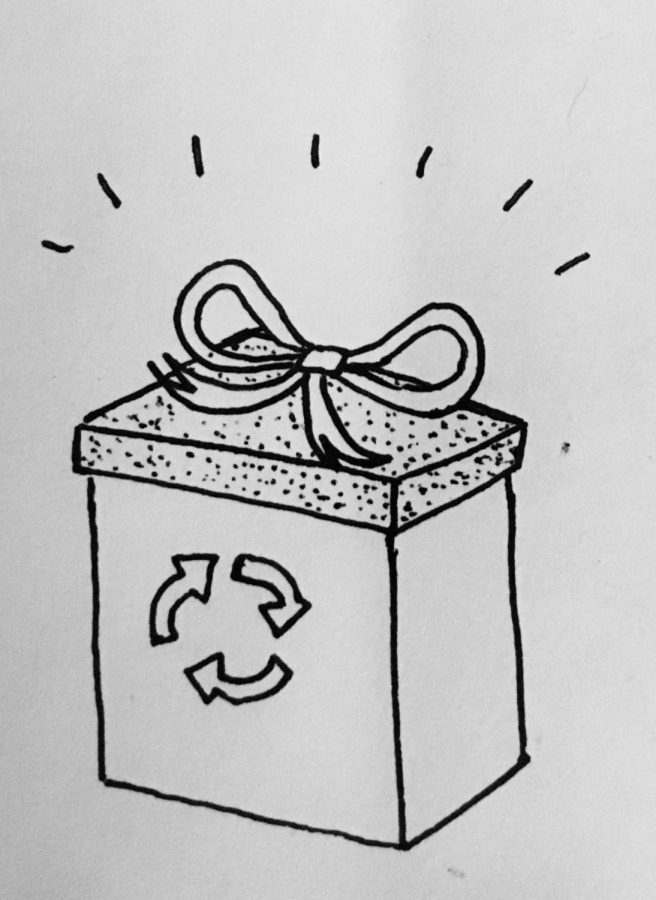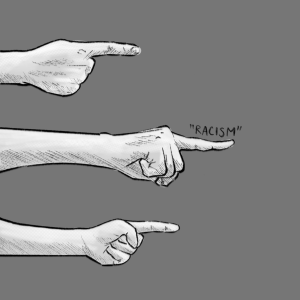“Waste-Deep” in the Holidays, Cambridge Evolves Toward Sustainable Gift-Giving
December 22, 2020
With each holiday season, the usual agony over gifts arises. It becomes necessary to take the risk of gift-giving, betting on whether your carefully selected items will be treasured or thrown away. In the past few years, however, there has been a notable shift within the Cambridge community and even globally; more and more people are beginning to be conscious of the mark they leave on the environment with their endless gag-gifts and tokens of appreciation. Locally aiding in this journey is Cleenland, a store selling low-waste everyday and specialty items just outside of Central Square. Customers can bring their own containers into the store to partake in the environmentally friendly products, support local candle or soap makers through their patronage, and spread sustainability through gifts.
Cleenland founder Sarah Levy feels it is vital to buy biodegradable gifts in anticipation of a potential lack of use, or even regifting. Levy told the Register Forum, “Get [someone] a bar of soap, or a bar of chocolate, something that’s more consumable and is not made of plastic. If they don’t like it they can give it to somebody else or if, worst-case scenario, they throw it in the garbage, it doesn’t stick with us forever.”
CRLS Junior Tess O’Shaughnessy plans sustainable gifts throughout the year as well as during the holiday season. “It’s so fun, I got a small block of clay, and I’ve made two incense holders and a dish,” she explained. “I’m also going to sew some bags, and maybe make cookies.” Sophomore Junee Manandhar also has experience with creating her own gifts. She shared, “In the past for my family I’ve painted on canvases which I had lying around, but I think baking from scratch for someone is great.”
Like O’Shaughnessy and Manandhar, Levy frequently uses baking as a low-waste demonstration of appreciation. “Whenever I make cookies I only bake half the batter and I freeze balls of the rest, so then whenever I want a cookie I’m just ready. I think that’s a really nice gift, a bag of cookie dough that’s already made and all you have to do is bake it.”
Isabel Macedo ’22 articulated a benefit to sustainable or handmade gifts beyond their environmental impact. “It takes a lot of time to make something on your own or search through a thrift store to find something that’s good quality,” Macedo told the Register Forum. “So if you get something used or make it yourself, the gift is even more valuable and meaningful because you put in an extra amount of time to work on it.” On her personal agenda is a creative, resourceful use of household items to ensure one-of-a-kind gifts. “I like to use magazines to make my cards, I cut out little pictures of things and glue them onto pieces of paper.” Macedo continued, “Even if you don’t want to buy a sustainable gift or a vintage gift that’s a really easy way to do something instead of going to CVS and buying a new card.”
The extra time and effort required to curate a thoughtful, low-waste gift, however, can require some extra motivation. At Cleenland, Levy acknowledges this and works to make the consumer experience as streamlined and “normal” as possible. “It’s bar soap, but without a wrapper, or dish soap, but you just bring your own container.” Some of her personal favorite products include locally made soy wax candles (with the choice of refilling the jar in-store), local lip balms in compostable tubes, refillable glass jars of silk floss, and shampoo and conditioner bars which “folks really love … across lots of different hair types.”
Accessibility to these seemingly foreign products can also be called into question: is paying more for a shampoo bar, rather than an easily found plastic bottle, worth it? Manandhar, understanding the apprehension, explained why she continues to work toward only consuming low-waste products, stating, “Sustainable things last longer, you don’t throw them out after one use. Even though you want to save money, if you go and buy something cheap and plastic it’s going to break way more quickly.” She concluded, “The ones that are sustainable will be a little more expensive, but it has a great impact, and you’d be saving money over time by not constantly replacing them.”
Even to those who are able to remind themselves of the greater mission, transitioning to a lower waste-producing lifestyle can be daunting and enigmatic. “I see people with a metal straw in a plastic cup,” Levy told the Register Forum with a tone of despair. “It’s totally understandable, and I fall into that trap sometimes, of just beating myself up over whatever waste I do produce, but I try to funnel that back into looking at the bigger picture; thinking about how we live our entire lives instead of the little things.”
Frustrated by those who seemingly miss the point by hyper-focusing on small actions, Levy refuses to sell metal straws at Cleenland. She explained, “I will say that I think as consumers our individual choices don’t really do anything. My motivation is to harness the potential of individual actions to influence systems that create waste and a wasteful society. When a community of folks gets together with their individual choices, that’s when we can influence and change.”










